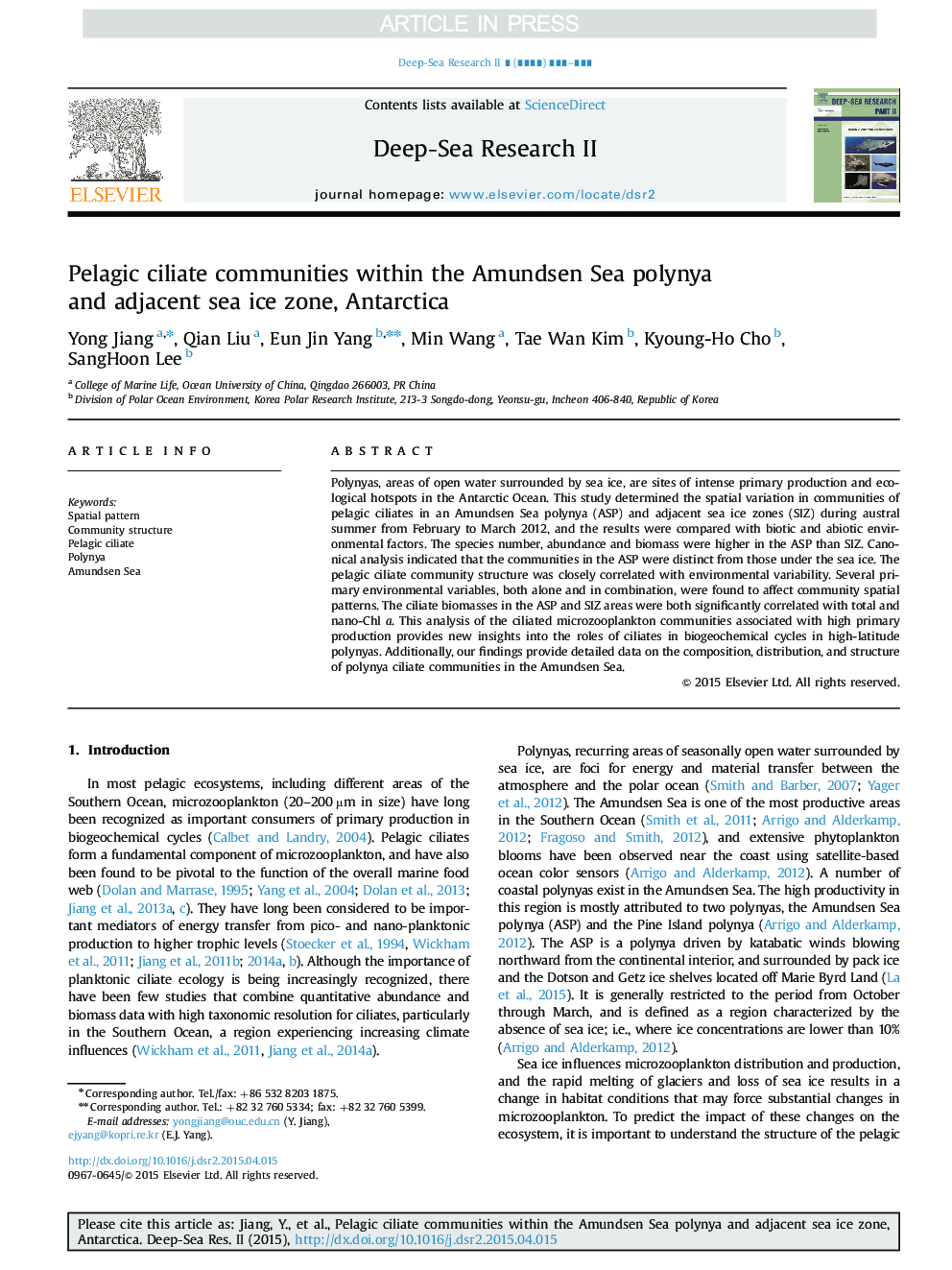| Article ID | Journal | Published Year | Pages | File Type |
|---|---|---|---|---|
| 6383995 | Deep Sea Research Part II: Topical Studies in Oceanography | 2016 | 9 Pages |
Abstract
Polynyas, areas of open water surrounded by sea ice, are sites of intense primary production and ecological hotspots in the Antarctic Ocean. This study determined the spatial variation in communities of pelagic ciliates in an Amundsen Sea polynya (ASP) and adjacent sea ice zones (SIZ) during austral summer from February to March 2012, and the results were compared with biotic and abiotic environmental factors. The species number, abundance and biomass were higher in the ASP than SIZ. Canonical analysis indicated that the communities in the ASP were distinct from those under the sea ice. The pelagic ciliate community structure was closely correlated with environmental variability. Several primary environmental variables, both alone and in combination, were found to affect community spatial patterns. The ciliate biomasses in the ASP and SIZ areas were both significantly correlated with total and nano-Chl a. This analysis of the ciliated microzooplankton communities associated with high primary production provides new insights into the roles of ciliates in biogeochemical cycles in high-latitude polynyas. Additionally, our findings provide detailed data on the composition, distribution, and structure of polynya ciliate communities in the Amundsen Sea.
Related Topics
Physical Sciences and Engineering
Earth and Planetary Sciences
Geology
Authors
Yong Jiang, Qian Liu, Eun Jin Yang, Min Wang, Tae Wan Kim, Kyoung-Ho Cho, SangHoon Lee,
